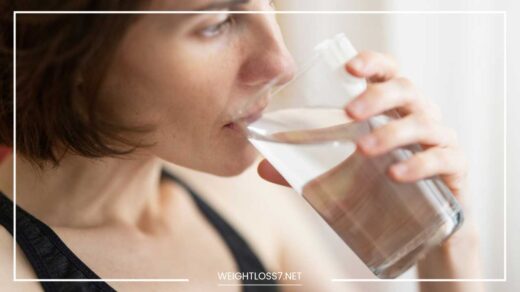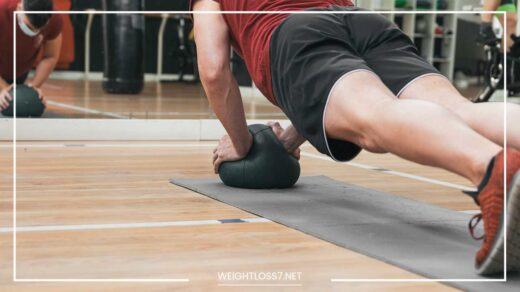Are Body Wraps Effective for Weight Loss?

Body Wraps
Body Wraps: Unveiling the Truth Behind the Hype for Weight Loss
The relentless pursuit of a quick and effortless path to weight loss fuels a multi-billion dollar industry, with countless products and treatments promising sculpted physiques and effortless fat burning.
Body wraps have emerged as a popular contender in this arena, enticing spa-goers with claims of inch loss, detoxification, and weight loss achieved while simply lying down.
But before you succumb to the allure of a body wrap session, let’s embark on a journey to unveil the science (or lack thereof) behind these treatments.
Unwrapping the History of Body Wraps
Body wraps, with their focus on sweating and detoxification, have roots in ancient cultures around the world. The Egyptians used mud wraps for perceived medicinal and cosmetic benefits.
Romans employed seaweed wraps for purported detoxification and weight management. These early practices were often steeped in traditional beliefs and lacked the scientific rigor of modern medicine.
The modern iteration of body wraps gained traction in the late 20th century, fueled by the rise of the spa industry and a growing emphasis on appearance.
However, the claims associated with these wraps have often outpaced the available scientific evidence.
Breaking Down the Body Wrap Process
So, what exactly goes into a body wrap treatment? The specifics may vary depending on the spa and the type of wrap offered, but the general process follows these steps:
- Consultation: A consultation with a spa technician typically precedes the wrap. This allows the technician to discuss your goals, any health conditions, and allergies you may have.
- Exfoliation: In some cases, the technician may begin by exfoliating your skin to remove dead skin cells and prepare for better absorption of the wrap’s ingredients.
- Application: The core of the treatment involves applying various substances to your body. These may include:
- Clays: Clays like kaolin or bentonite are popular choices due to their purported ability to draw out impurities from the skin.
- Algae: Seaweed wraps, rich in minerals and antioxidants, are often used for their perceived detoxifying and skin-softening properties.
- Herbs: Wraps may incorporate various herbs like ginger, rosemary, or green tea, each with its own set of claimed benefits.
- Essential Oils: Essential oils like lavender or grapefruit are sometimes included for their purported relaxation and aromatherapy effects.
- Wrapping: Once the chosen substances are applied, your body is typically wrapped tightly in plastic wrap or a similar material. This creates a sauna-like effect, promoting sweating.
- Relaxation: The wrap treatment typically lasts for 30-45 minutes, allowing you to relax while sweating.
- Removal and Rinse: After the allotted time, the technician removes the wrap and rinses off the applied substances.
Dissecting the Claims: Fact or Fiction?
Body wraps are often marketed with a variety of enticing claims, particularly when it comes to weight loss and body contouring. Let’s delve deeper and analyze the science behind these claims:
- Inch Loss: One of the most prominent claims associated with body wraps is the ability to achieve immediate inch loss. While you may see a difference on the measuring tape after a wrap session, this is primarily due to water weight loss. The profuse sweating induced by the wrap can lead to a temporary reduction in water weight, but this doesn’t translate to actual fat loss. Once you rehydrate, the lost water weight returns.
- Detoxification: The human body has a natural and efficient detoxification system involving the liver, kidneys, and lymphatic system. These organs are specifically designed to filter out waste products and toxins. There’s no credible scientific evidence to suggest that body wraps enhance this process or eliminate toxins in any significant way.
- Fat Loss: This is perhaps the biggest claim, and unfortunately, the one with the least scientific backing. Fat cells reside beneath the skin’s surface. There’s no convincing research demonstrating that topically applied substances in body wraps can penetrate deep enough to break down fat cells and lead to weight loss.
- Cellulite Reduction: Cellulite, the bumpy appearance on the thighs and buttocks, is a common concern for many people. Body wraps are often touted as a solution for cellulite reduction. However, the science on cellulite is still evolving, and there’s no single, proven treatment for it. Body wraps are unlikely to have any significant impact on cellulite.
Potential Risks and Drawbacks to Consider
While generally considered safe for healthy individuals, body wraps can come with some drawbacks that you should be aware of:
- Dehydration: The sweating induced by body wraps can lead to dehydration, especially if you don’t replenish fluids adequately before, during, and after the treatment. Be sure to drink plenty of water throughout the day, particularly before and after a wrap session.
- Skin Irritation: The ingredients in body wraps, especially essential oils and clays, can irritate sensitive skin. A patch test is highly recommended before a full-body treatment. Apply a small amount of the wrap material to a non-descript area of your inner arm and wait 24 hours to see if there’s any redness, itching, or burning.
- Claustrophobia: The tight wrapping can be uncomfortable and create a sense of claustrophobia for some individuals. If you have claustrophobic tendencies, discuss this with the spa technician beforehand and inquire about alternative treatments.
- Cost: Spa body wraps can be expensive, ranging from $100 to $200 or more per session. Considering the temporary and unsubstantiated benefits for weight loss, the cost-effectiveness is questionable.
Sustainable Weight Loss Strategies: Building Healthy Habits
Let’s face it; body wraps are a shortcut, and sustainable weight loss doesn’t involve shortcuts. It’s about developing healthy lifestyle habits that you can maintain in the long run. Here are some tried-and-true methods for healthy and lasting weight loss:
- Diet: Focus on a balanced diet that incorporates a variety of nutrient-rich foods. Prioritize fruits, vegetables, whole grains, and lean protein sources. Limit processed foods, sugary drinks, and unhealthy fats. When it comes to portion control, mindful eating practices can be very helpful. Pay attention to your hunger and fullness cues. Eat slowly and savor your food. This allows your body time to register satiety signals, preventing overeating.
- Exercise: Regular physical activity is crucial for weight loss and overall health. Aim for at least 150 minutes of moderate-intensity exercise per week. This could include brisk walking, swimming, cycling, or dancing. Strength training exercises that build muscle mass are also important for boosting metabolism and burning calories even at rest.
- Sleep: Don’t underestimate the power of sleep for weight management. When you’re sleep-deprived, your body produces more ghrelin, a hormone that stimulates hunger, and less leptin, a hormone that signals satiety. Aim for 7-8 hours of quality sleep each night.
- Stress Management: Chronic stress can lead to unhealthy food choices and weight gain. Find healthy ways to manage stress, such as yoga, meditation, spending time in nature, or spending time with loved ones.
Alternatives to Body Wraps for a Spa-Like Experience
If you’re looking for a relaxing spa experience with potential skin benefits, consider these alternatives to body wraps:
- Mud Masks: Mud masks can be a great way to pamper your skin. Mud contains minerals that may help draw out impurities and improve skin texture. Look for mud masks formulated for your specific skin type, whether it’s dry, oily, or combination.
- Salt Scrubs: Salt scrubs are excellent for exfoliation. They help remove dead skin cells, leaving your skin feeling smooth and refreshed. Choose a salt scrub with a natural oil base to keep your skin hydrated after exfoliation.
- Massage Therapy: Massage therapy offers a multitude of benefits, including relaxation, improved circulation, and reduced muscle tension. A relaxing massage can be a great way to unwind and de-stress. Look for a licensed massage therapist who specializes in techniques that suit your needs.
The Allure of Body Wraps: A Psychological Perspective
Beyond the unsubstantiated claims, it’s important to understand the psychological appeal of body wraps. Here are some factors that contribute to their allure:
- The “Magic Bullet” Mentality: The human desire for quick and easy solutions is a powerful motivator. Body wraps seem to offer a seemingly effortless path to weight loss, appealing to those seeking a shortcut.
- The Spa Experience: Spas are associated with relaxation, pampering, and overall well-being. A body wrap treatment can feel luxurious and indulgent, contributing to a sense of self-care.
- The Placebo Effect: The belief that a treatment will work can have a real physiological impact. Some individuals may experience temporary feelings of weight loss or body improvement simply because they believe the wrap is working.
A Holistic Approach to Weight Loss and Well-being
Sustainable weight loss and overall well-being go beyond just physical appearance. Here’s how to cultivate a holistic approach:
- Body Positivity: Developing a healthy body image and appreciating your body for its capabilities, not just its appearance, is crucial. Focus on nourishing your body with healthy foods and engaging in activities that make you feel good.
- Mind-Body Connection: The mind and body are intricately linked. Chronic stress, anxiety, and negative self-talk can hinder weight loss efforts. Practices like mindfulness meditation, yoga, and spending time in nature can promote relaxation and a more positive self-image.
- Community and Support: Surrounding yourself with supportive people who encourage healthy habits can make a significant difference. Consider joining a weight loss support group, finding an exercise buddy, or confiding in a trusted friend or family member.
The Role of Medical Professionals in Weight Loss
Consulting a doctor or licensed dietician can be invaluable in your weight loss journey. They can:
- Develop a Personalized Plan: A healthcare professional can create a weight loss plan tailored to your individual needs and health history. This may include dietary recommendations, exercise guidance, and behavior modification strategies.
- Address Underlying Conditions: Certain medical conditions can make weight loss more challenging. A doctor can identify and address any underlying health issues that may be contributing to weight gain.
- Monitor Progress and Offer Support: Regular check-ins with a healthcare professional allow them to monitor your progress, adjust your plan as needed, and provide ongoing motivation and support.
Investing in Your Long-Term Health
While body wraps may offer a fleeting sense of indulgence, they are not a sustainable solution for weight loss. By focusing on developing healthy habits, cultivating a positive body image, and seeking professional guidance when needed, you can achieve lasting weight loss and improve your overall well-being.
Remember, weight loss is a journey, not a destination. Embrace the process, celebrate your progress, and invest in your health for a happier, healthier future.
The Bottom Line on Body Wraps: Focus on Long-Term Solutions
While body wraps may provide a temporary feel-good boost or a slight improvement in skin texture, their effectiveness for weight loss is unsubstantiated. The effects are not sustainable, and the cost can be significant.
If you’re serious about reaching your weight loss goals, focus on developing healthy lifestyle habits that you can maintain in the long run. Remember, consistency is key.
By incorporating a balanced diet, regular exercise, mindful eating practices, and adequate sleep into your routine, you can achieve lasting weight loss and improve your overall health. Don’t be tempted by quick fixes – invest in sustainable habits for a healthier, happier you.
Additional Considerations
This blog post has focused on body wraps for weight loss. It’s important to note that some spas may offer body wraps for other purposes, such as pain relief or improved circulation.
If you’re considering a body wrap for a specific health concern, consult with a doctor or licensed healthcare professional before undergoing the treatment. They can advise you on the potential benefits and risks based on your individual health status.
Empowering Yourself with Knowledge
Making informed decisions about your health and well-being is crucial. By understanding the science behind body wraps and their limitations, you can avoid unrealistic expectations and invest your time and money in strategies that are more likely to lead to lasting weight loss success.

















